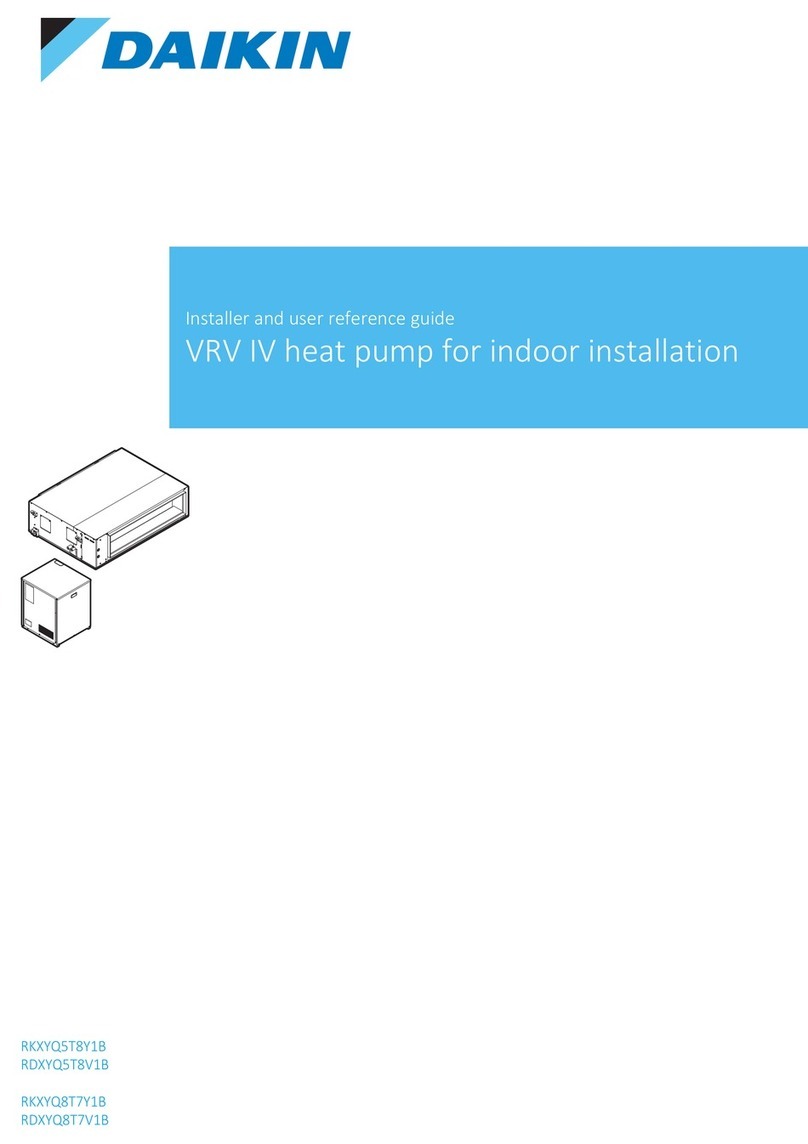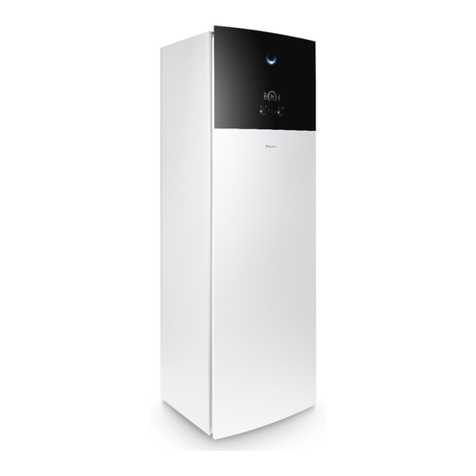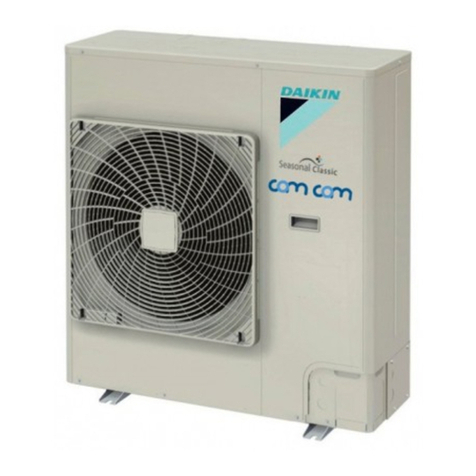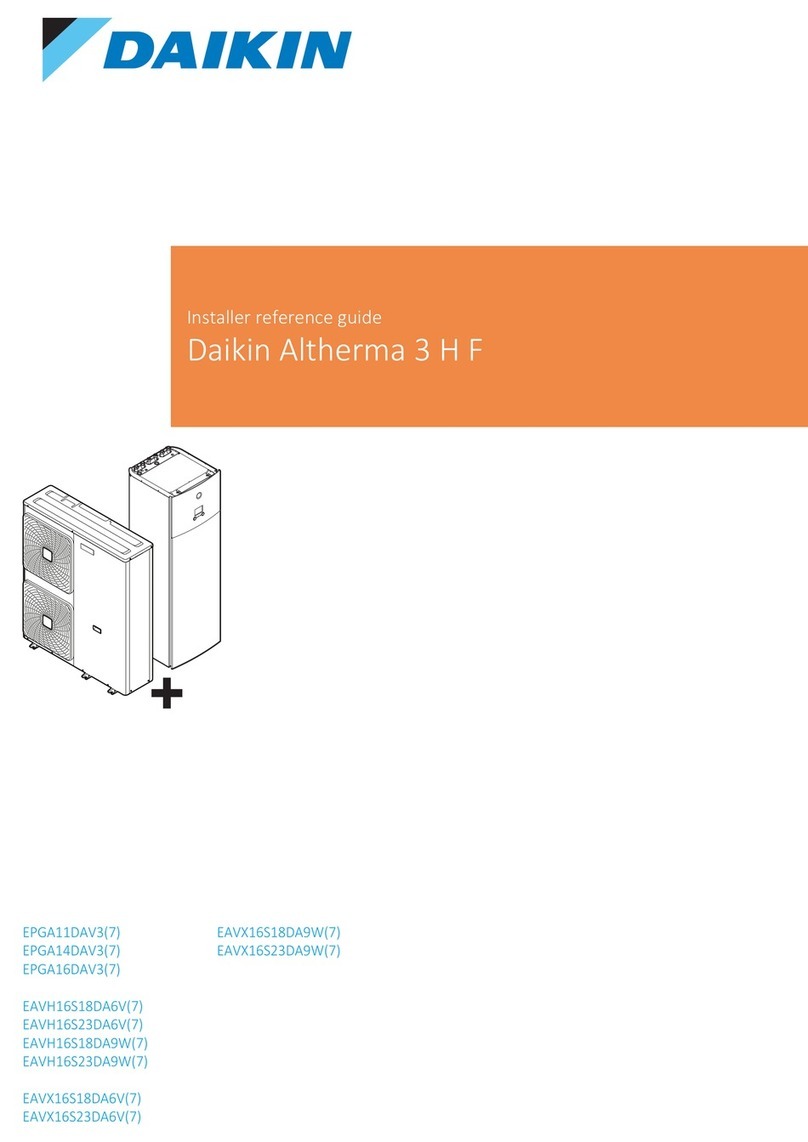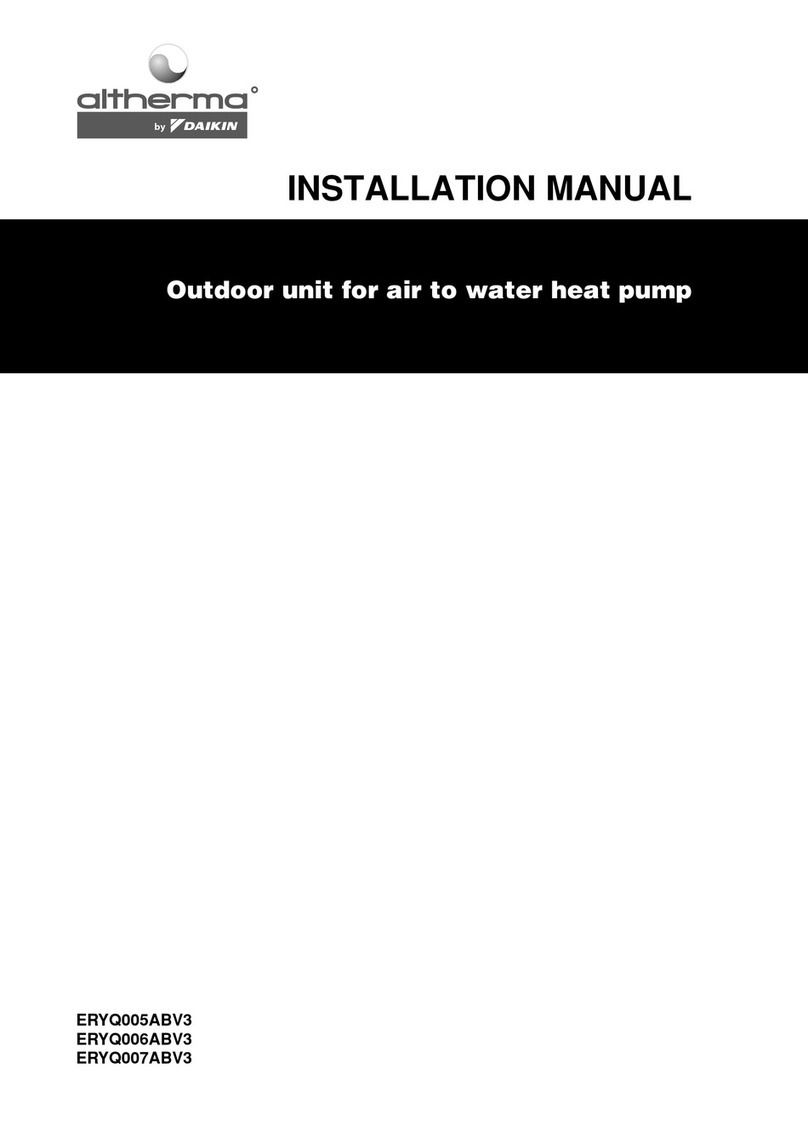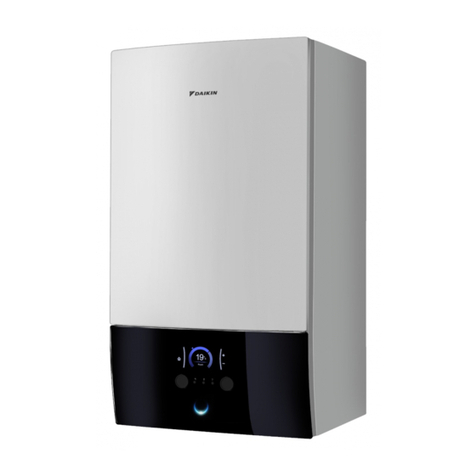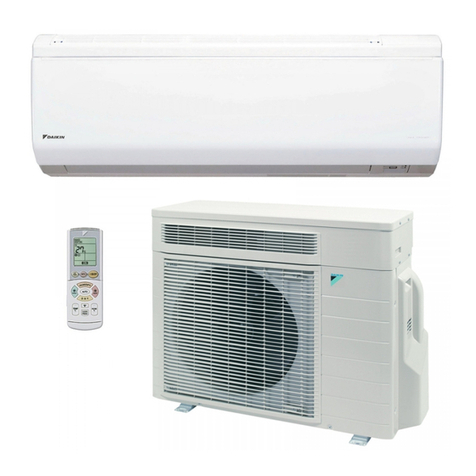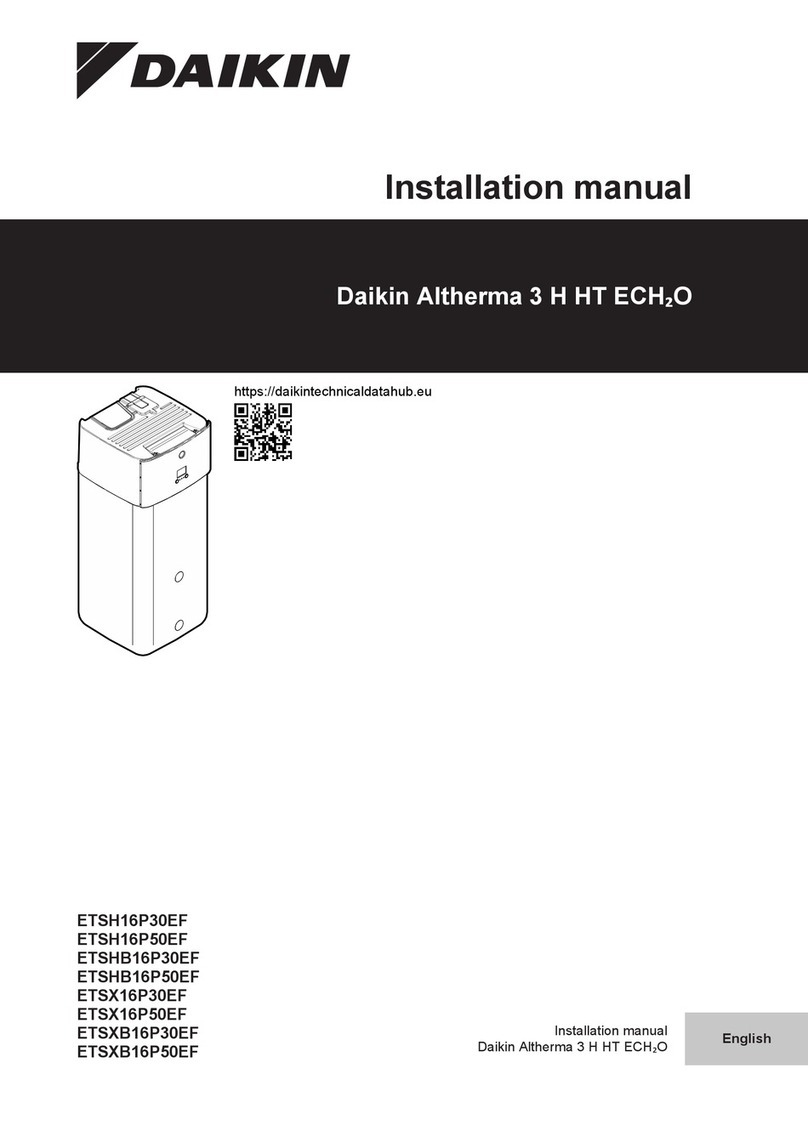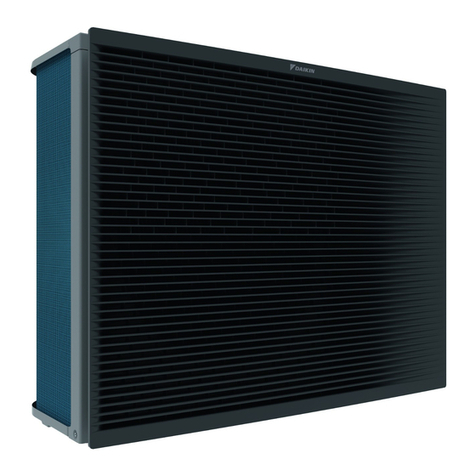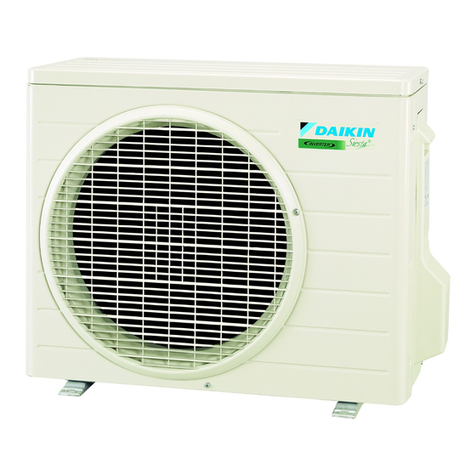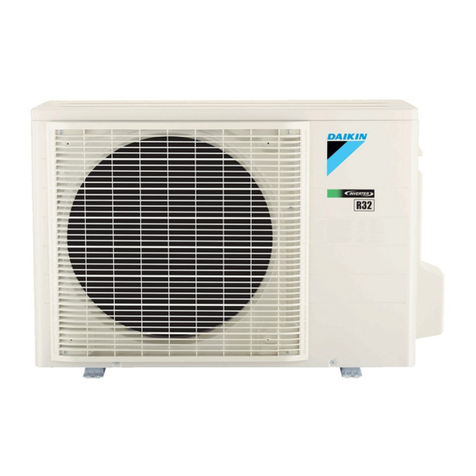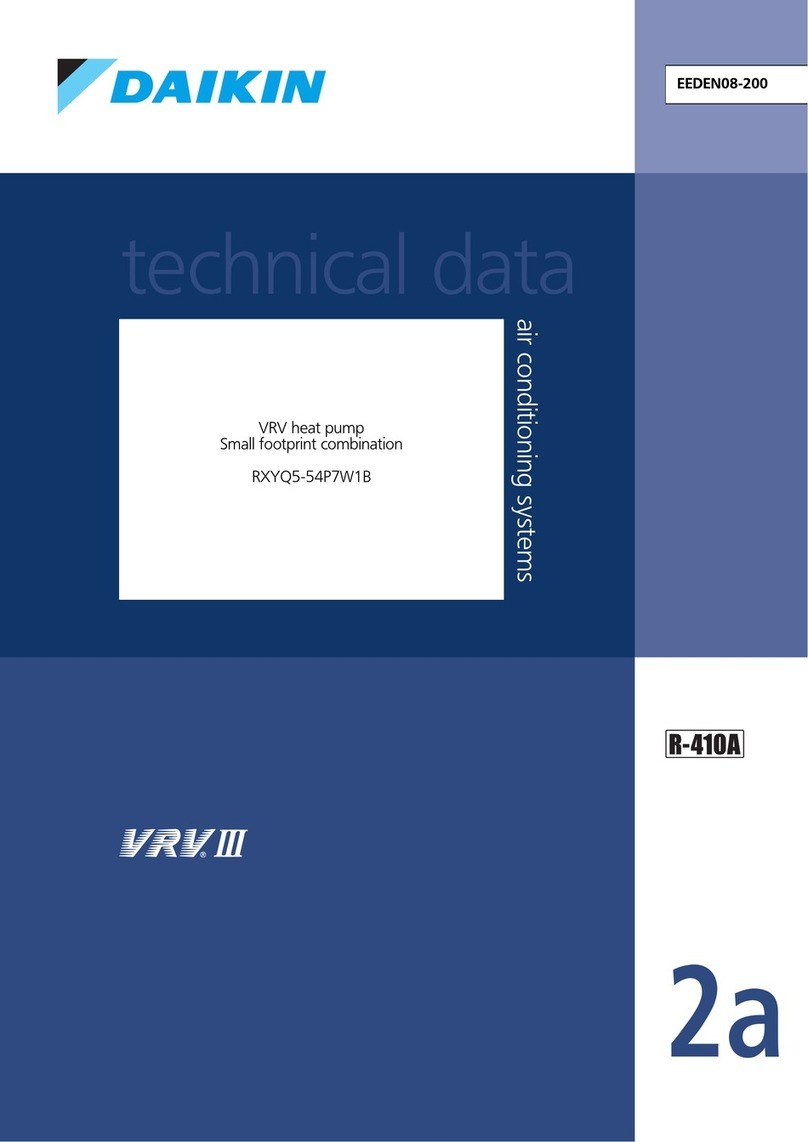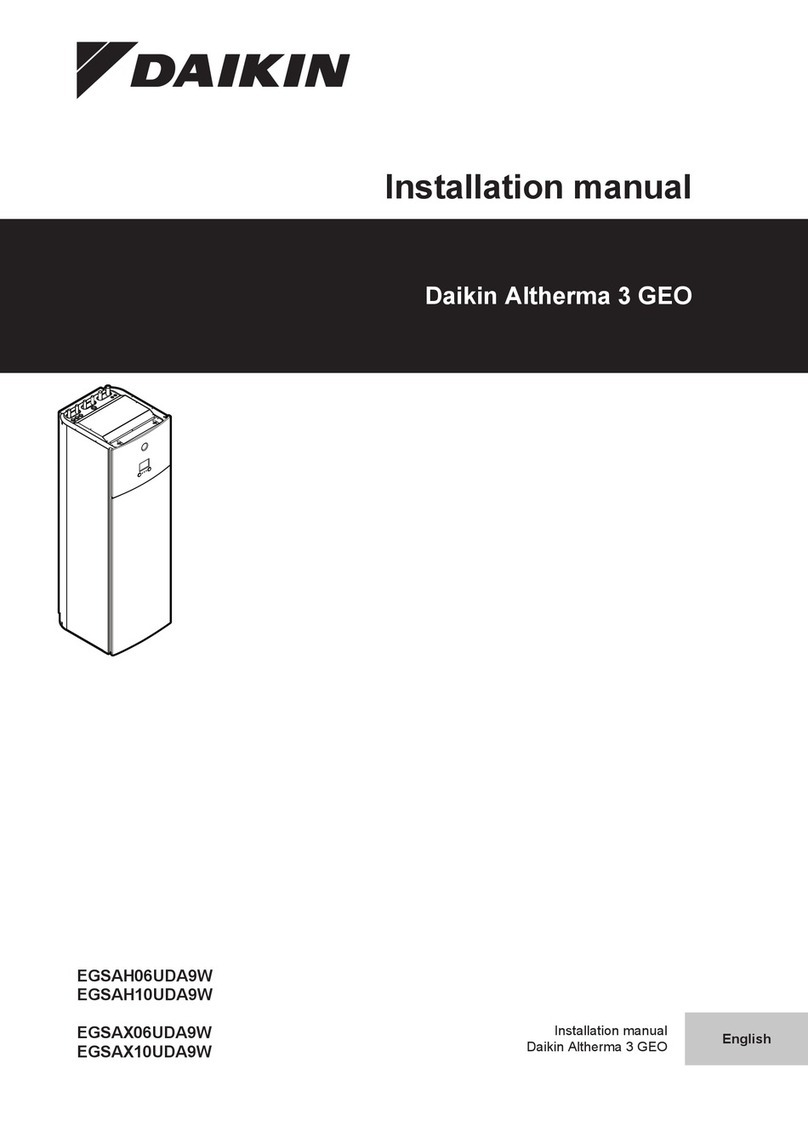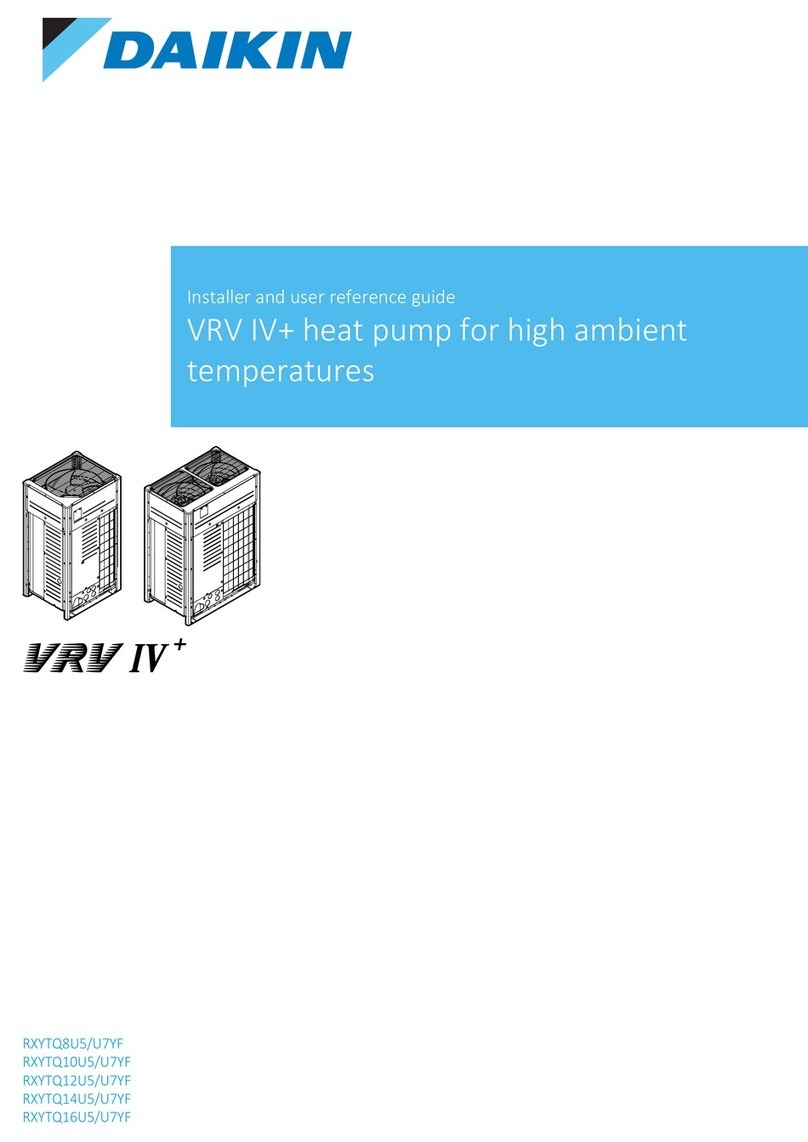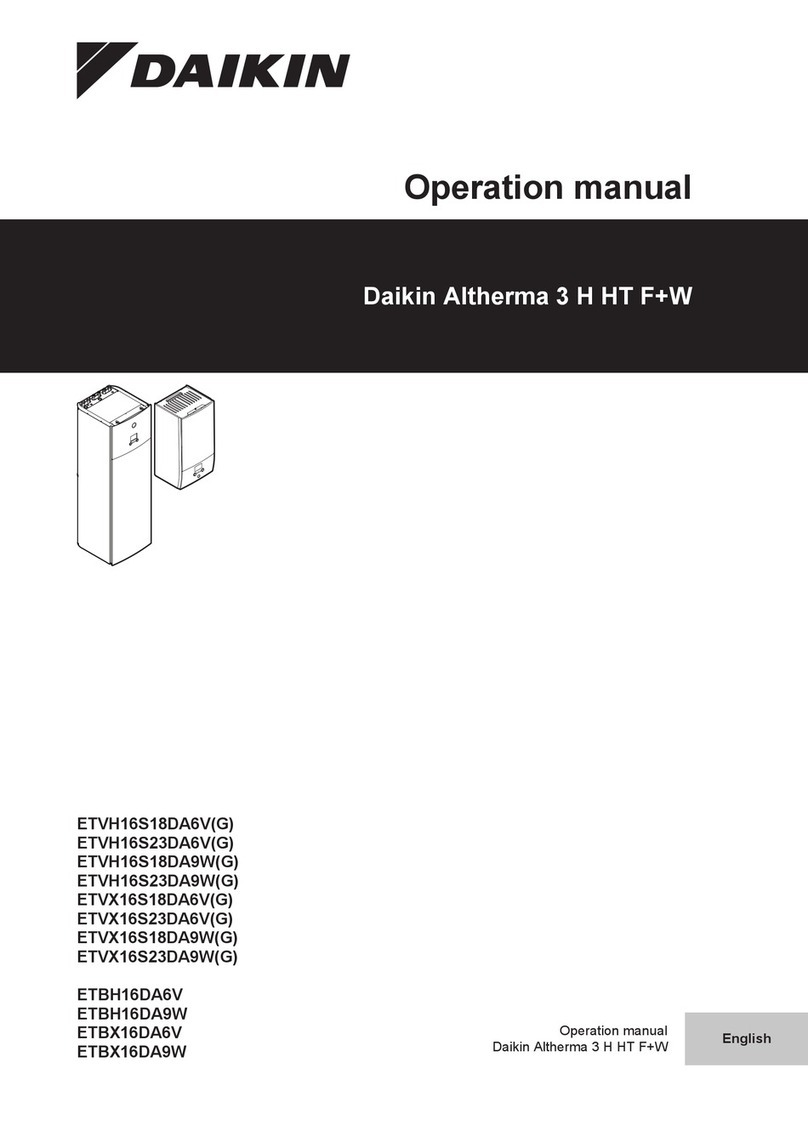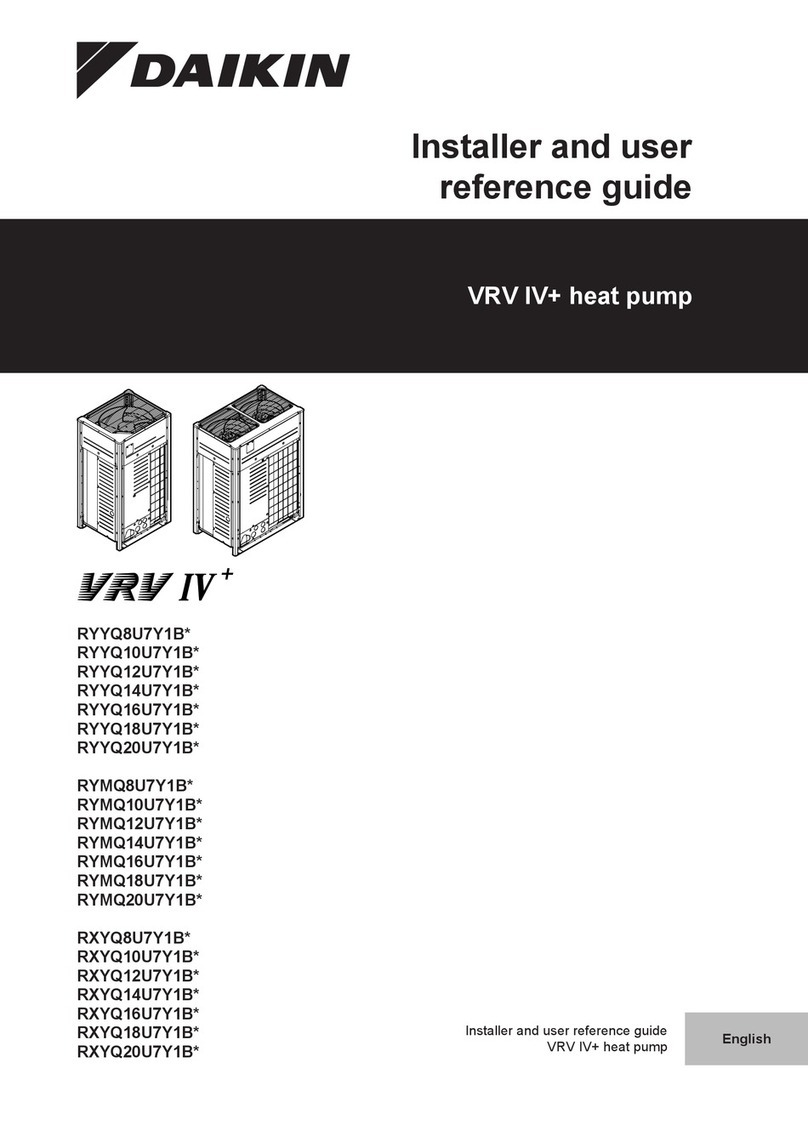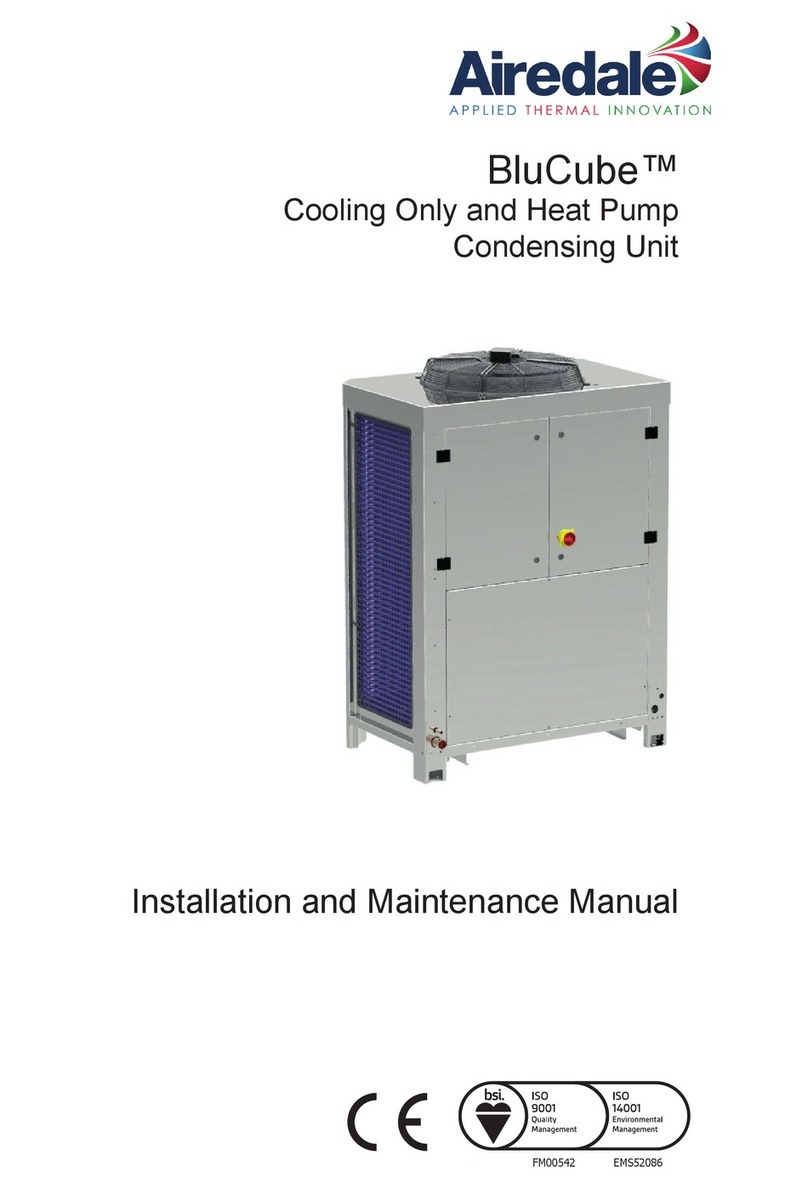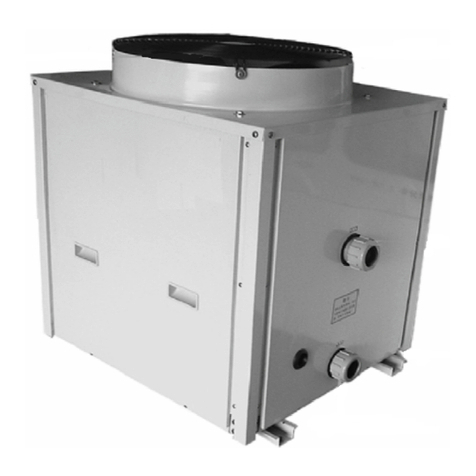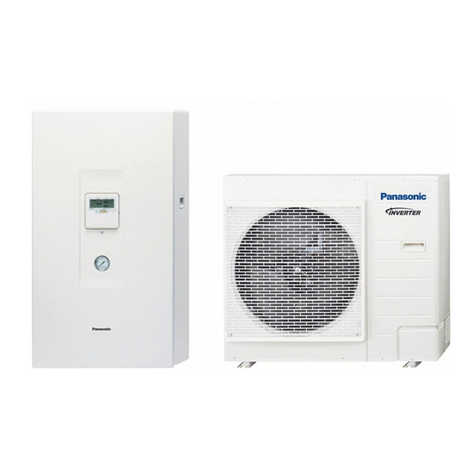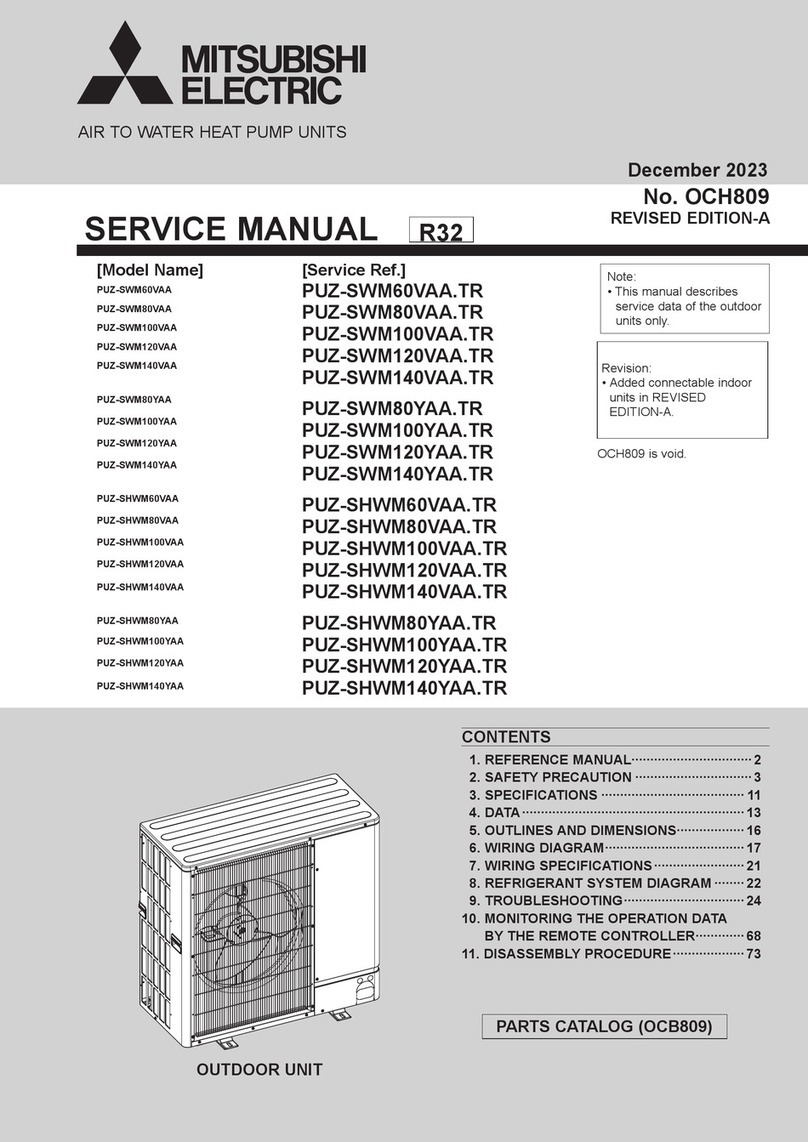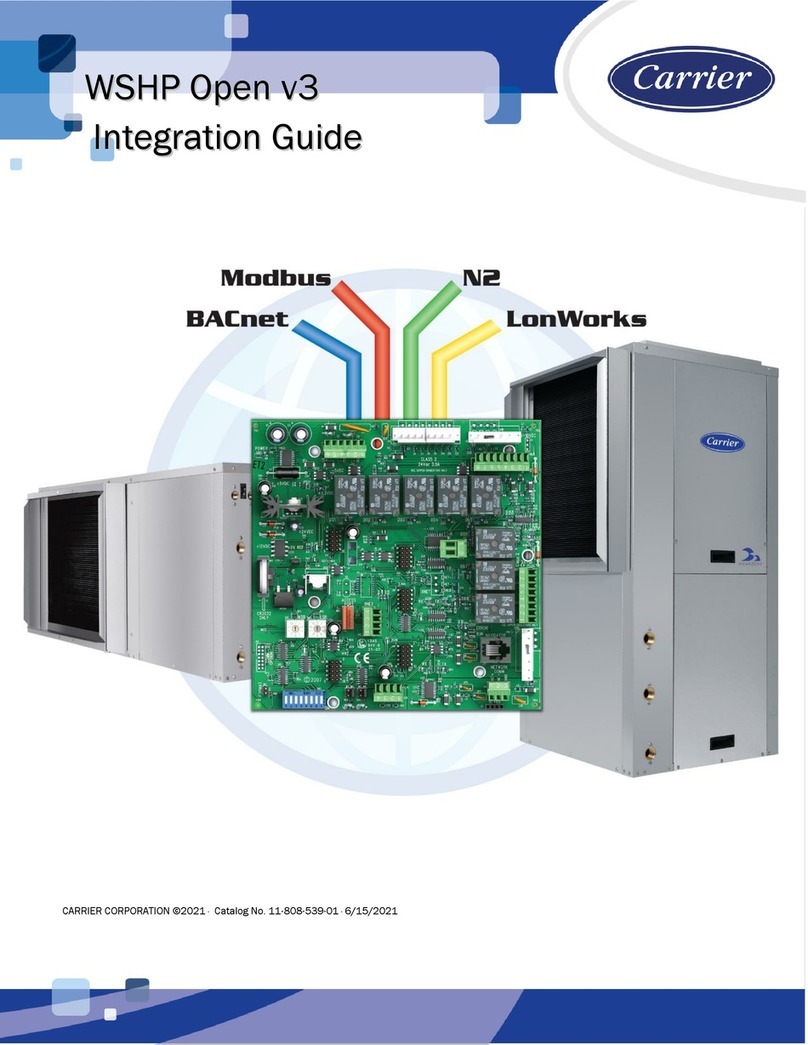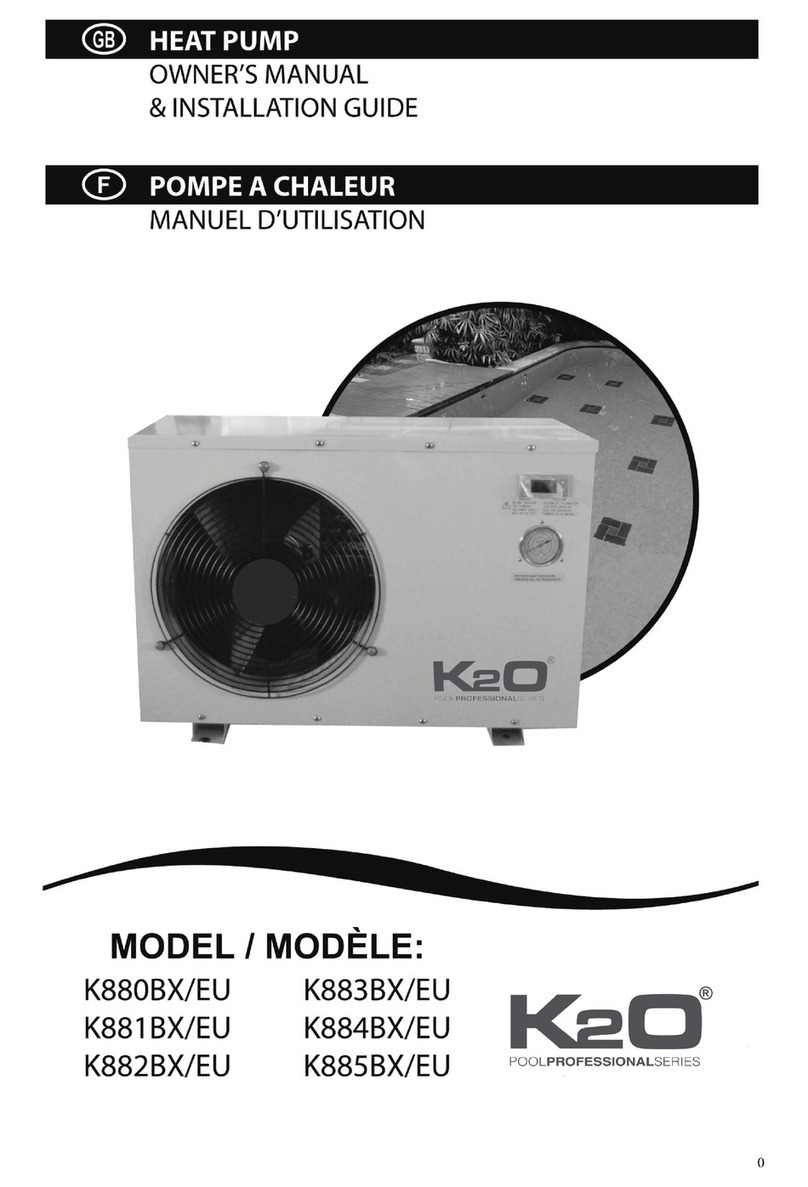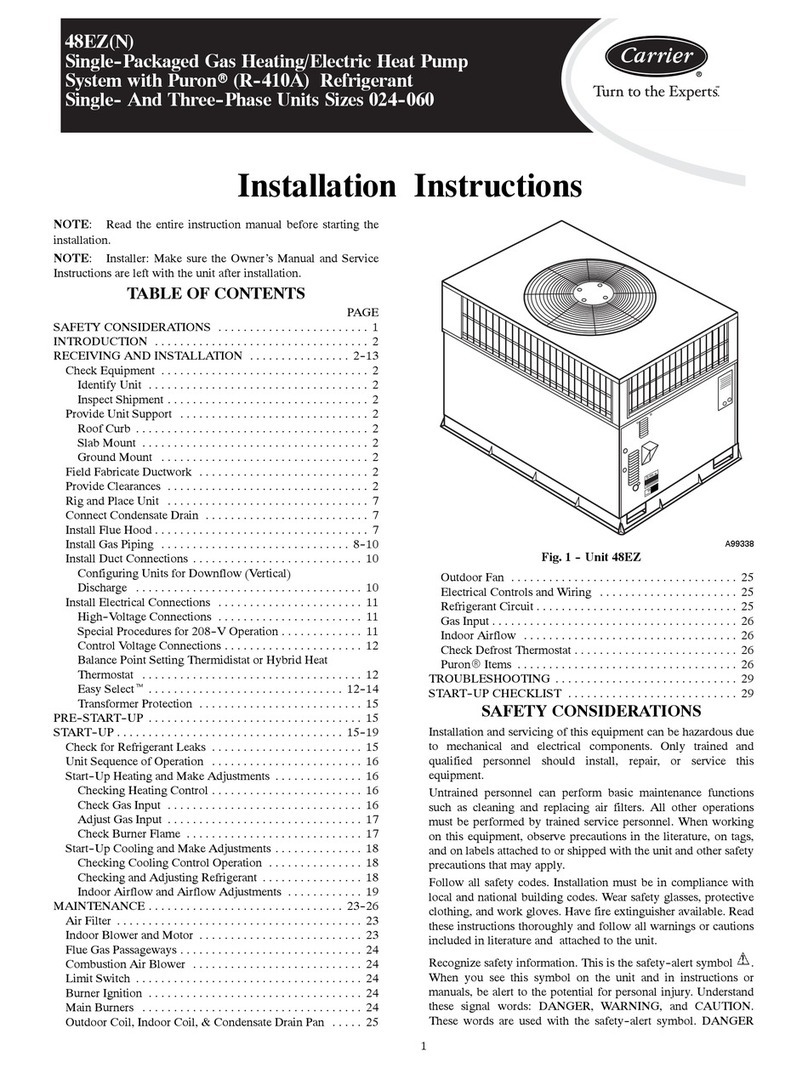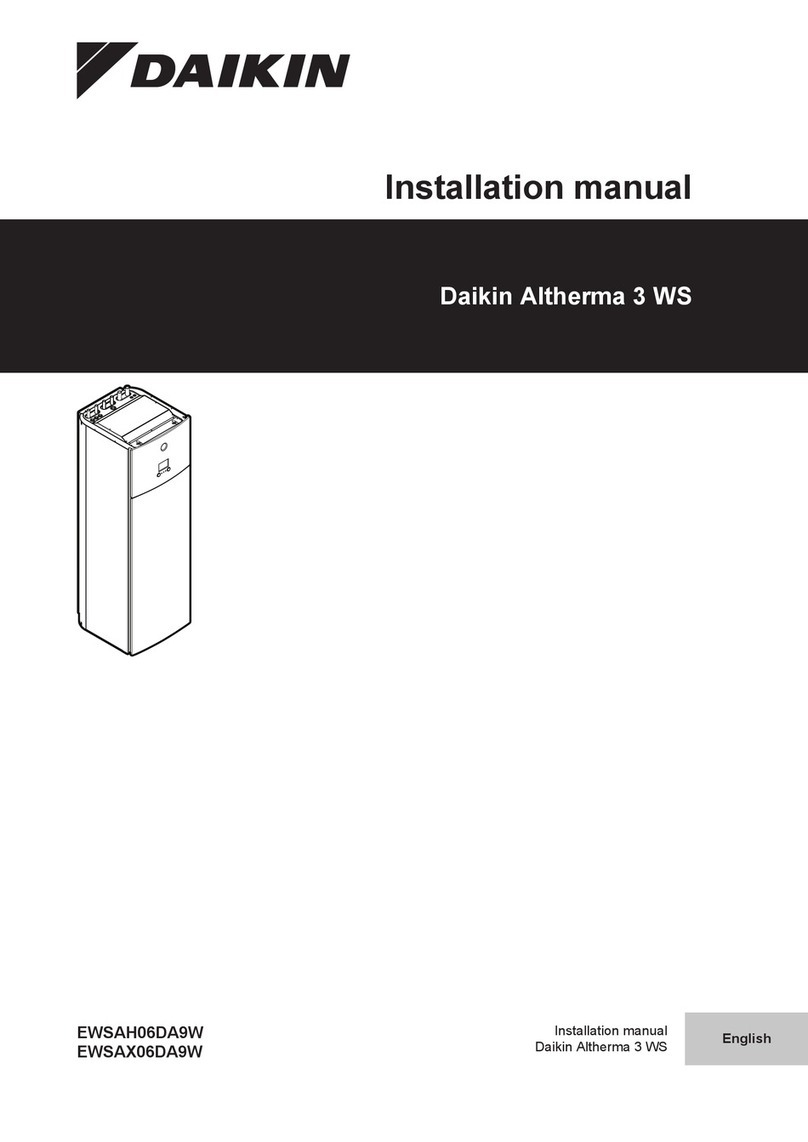
SiUS071735EA
iii Table of Contents
2.11 Electronic Expansion Valve Control ........................................................... 40
2.12 Malfunctions ............................................................................................... 43
Part 5 Remote Controller ............................................................... 44
1. Wired Remote Controller (BRC1E73) .......................................................45
2. Wireless Remote Controller (BRC082A43)...............................................51
Part 6 Service Diagnosis................................................................ 53
1. General Problem Symptoms and Check Items .........................................55
2. Troubleshooting with LED .........................................................................56
2.1 Indoor Unit.................................................................................................. 56
2.2 Outdoor Unit ............................................................................................... 56
3. Service Diagnosis .....................................................................................57
3.1 Wired Remote Controller (BRC1E73) ........................................................ 57
3.2 Wireless Remote Controller (BRC082A43) ................................................ 59
4. Troubleshooting ........................................................................................63
4.1 Error Codes and Description ...................................................................... 63
4.2 Indoor Unit PCB Abnormality ..................................................................... 64
4.3 Drain Level Control System Abnormality.................................................... 65
4.4 Indoor Fan Motor (DC Motor) or Related Abnormality ............................... 66
4.5 Indoor Fan PCB Abnormality...................................................................... 68
4.6 Humidifier or Related Abnormality.............................................................. 69
4.7 Thermistor or Related Abnormality............................................................. 70
4.8 Remote Controller Thermistor Abnormality ................................................ 71
4.9 Signal Transmission Error
(Between Indoor Unit and Remote Controller) ........................................... 72
4.10 Signal Transmission Error
(Between MAIN Remote Controller and SUB Remote Controller) ............. 73
4.11 Low-voltage Detection or Over-voltage Detection...................................... 74
4.12 Signal Transmission Error (Between Indoor Unit and Outdoor Unit).......... 76
4.13 Mismatching of Indoor Unit and Outdoor Unit ............................................ 78
4.14 Outdoor Unit PCB Abnormality................................................................... 79
4.15 OL Activation (Compressor Overload) ....................................................... 80
4.16 Compressor Lock ....................................................................................... 82
4.17 DC Fan Lock (Outdoor Fan Motor)............................................................. 83
4.18 Input Overcurrent Detection ....................................................................... 84
4.19 Four Way Valve Abnormality...................................................................... 85
4.20 Discharge Pipe Temperature Control......................................................... 87
4.21 High Pressure Control in Cooling ............................................................... 88
4.22 System Shutdown due to Compressor Internal Temperature
Abnormality ................................................................................................ 90
4.23 Compressor System Sensor Abnormality .................................................. 91
4.24 Position Sensor Abnormality ...................................................................... 92
4.25 Thermistor or Related Abnormality (Outdoor Unit)..................................... 94
4.26 Electrical Box Temperature Rise................................................................ 96
4.27 Radiation Fin Temperature Rise ................................................................ 97
